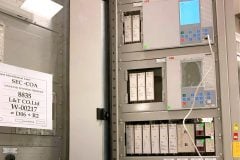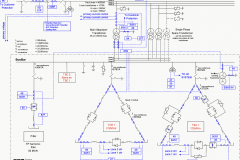
The main motivation for decision makers to take an interest in energy control solutions is economic efficiency. When deciding whether to invest in improvement work, the manager of a building, for example, must be convinced that the operation will produce immediate results as well as an acceptable time for return on the investment (from two to five years in most cases).
With cost savings thus the dominating factor, it is highly worthwhile to attempt to optimize the application of energy supply agreements before even considering technical changes to reduce actual physical consumption.
It is thus a question of first trying to spend less rather than trying to use fewer kWh.
Analyzing energy bills
Although in this exclusively financial approach our primary interest is in the supply of electrical energy, we can compare this to the supply of other forms of energy. Supply is provided under a contract made with a supplier whose profile can vary considerably depending on the country: a state-owned company; public, mixed or private control of distribution; or a trading and services company in a competitive or monopoly situation. Given these conditions, there is a large variety of contract types, and the choice widens as the power requirements for the site increase.
In many countries where the electricity sector is in the process of privatization, consumers have access to a competitive market when their needs exceed a so-called “eligibility” threshold.
- Standing charges: subscriber and other charges (maintenance, services, etc.),
- Variable charges corresponding to:
- The supply of metered energy, a cost which may be quite complex and comprise several tariffs,
- The maximum power reached or subscribed to:
– the active power in kW or apparent power in kVA which includes the reactive power,
– as an instantaneous value or an average value over a time interval.
There can be one or more accounts according to time or period; there may also be a penalty for exceeding an agreed threshold;
- The reactive power consumed, in general metered above a tolerated threshold,
- Tther variable charges and services.
- Taxes.
Depending on the country, the electricity bill may therefore be complicated or even extremely complicated. It is thus essential to include how it is calculated, and to have a thorough knowledge of the electricity needs of the building in order to determine possible areas of improvement.
The first area for improvement is the best use of the existing contract, and the second is the renegotiation of this contract with the supplier.
Using the existing contract
There are several possible approaches to make the best use of the existing electricity supply contract.
- Limiting the power demand from the distribution network by using the existing available internal sources (generating sets). This avoids any oversizing of the subscriber contract or exceeding of the contract limit and leads to a reduction in total energy costs. To assess the economic impact it is therefore also advisable to know the cost of the alternative energy source, for example the efficiency of the generating sets and the price of the fuel consumed.
.
It is obvious that replacing the electrical energy provided by a distributor with energy produced on site is more cost-effective during the most expensive times (peak hours) under the contract.
.
This economic advantage of using an internal source is inextricably linked to another very significant advantage: the possibility of overcoming any interruption in the external supply and of maintaining essential services.
. - Optimizing reactive power by installing a compensator to avoid any invoice penalties (which also reduces active power losses).
. - Switching consumption where possible to the least expensive tariff periods. Some energy consumption can be deferred without reducing either productivity or the comfort of occupants by managing the devices which consume energy via an automatic control system.
This solution is usually applied to the production of domestic hot water with storage water heaters (hot water tanks) and for electrical storage heating systems. Another application in certain countries is to use large volumes of ice formed during low tariff periods in cooling systems for air conditioning.
In all cases, unless it is a question of simple load shedding which is temporarily preventing an operation or service, the installation must be designed to enable this type of operation.
Renegotiating the contract
If optimum use is already being made of the existing electricity supply contract, it is still possible to negotiate a modification, for example by adapting the subscribed power demand in the contract to building activity (the right quantity of energy required distributed over time). It goes without saying that the bigger the consumer, the more flexible the supplier will be, even in a monopoly situation: distributors may also have difficulties in managing their energy resources.
Negotiation is of course easier if there is competition in the supply of energy. The requirements of the various suppliers are not the same, and their proposals may therefore differ, with adaptation to the needs of particular customers.
In certain countries, it is possible to sign a single contract with one energy supplier to supply several establishments managed by the same company or by an interest group consisting of several independent companies. The sites concerned are not necessarily in the same geographical area: they may even be in different regions of the same country, or in different countries if those concerned have international interests. These “multi-site” contracts can be used to optimize electrical energy management with more flexibility, provided there is full control of their complexity.
It is sometimes possible to draw on several energy suppliers according to need. In certain countries, suppliers and major purchasers can be brought together by means of “Energy Markets”: they then directly negotiate the quantities of energy required from day to day.
Access to this market, which permanently offers the best price opportunities, is of course reserved to the largest customers.











This device can improve power factor. But the domestic consumer is not affected by power factor as the electricity bill is based only on KWH & not on KVAH( For domestic load of less than 10 KW).
However it can help the domestic consumer in improving the KVA demand which has insignificant effect on power bill.